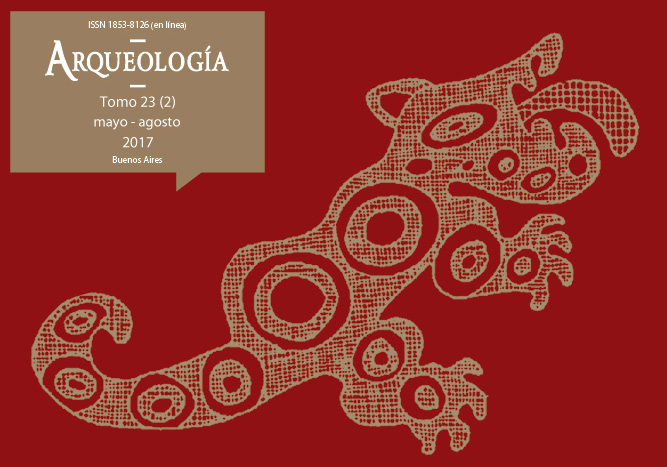Archaeological distribution studies from Monte Loayza (North Coast of Santa Cruz, Patagonia)
Keywords:
Distributional archaeology, Monte Loayza, Lithic artifacts
Abstract
In this paper, we present the first results of distributional studies undertaken at the Monte Loayza sector of the North coast of Santa Cruz (NCSC). Studies conducted at Monte Loayza were aimed at understanding the structural characteristics of the surface archaeological record of the sector. In this regard, previous archaeological studies of this sector were both scarce and unsystematic. The Monte Loayza sector had some unique elements. These elements were useful in contrasting with previous hypotheses proposed within the framework of the North Coast of Santa Cruz project, regarding the use of different types of coasts, resource availability, and the manner in which, coastal and inland areas were occupied by human groups. Distributional studies performed on different landscape units, such as coast, small canyons (known as cañadones in Patagonia), temporary lagoons and plateaus allowed us to confirm that this particular sector had, in general, low to medium artifact densities. This constitutes a medium to lower density vis-à-vis other sectors along the northern coast of Santa Cruz. However, a higher intensity of use, interpreted as residential, of a part of an open coast was observed; while another area of cliffy coast, with a high availability of varied types of resources, had almost no artifact record, this is probably related to diffculty of access at this location.Downloads
Download data is not yet available.
How to Cite
Zubimendi, M. A., & Ambrústolo, P. (1). Archaeological distribution studies from Monte Loayza (North Coast of Santa Cruz, Patagonia). Arqueología, 23(2), 99-124. https://doi.org/10.34096/arqueologia.t23.n2.3780
Section
Articles
Authors who publish in this journal agree to the following conditions:
- Authors retain copyright and yield to the journal right of first publication with the work registered with attribution license Creative Commons, which allows third parties to use the published always mentioning the authorship of the work and first publication in this magazine.
- Authors can make other independent and additional contractual arrangements for the non-exclusive distribution of the version of the article published in this issue (p. Eg., Inclusion in an institutional repository or publish it in a book), provided that clearly indicate that the work was published for the first time in this magazine.
- It allows and encourages the author / s to publish their work online (eg institutional or personal pages) before and during the process of revision and publication, as it can lead to productive exchanges and greater and more rapid dissemination of work published (See The Effect of Open Access).





(1)13.png)






1.jpg)
1.jpg)


13.png)
1.png)


(1)1.png)









